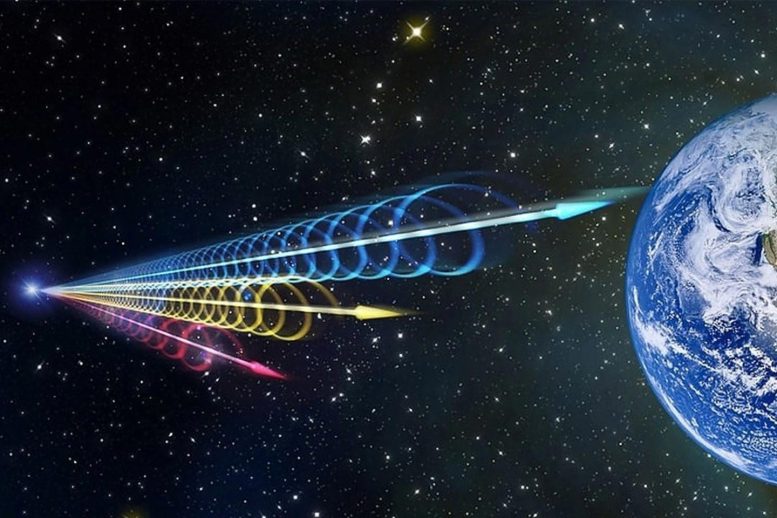
Artist’s conception of fast radio burst reaching Earth. Researchers have discovered 25 new sources of repeating fast radio bursts (FRBs) using innovative statistical tools. The study challenges previous assumptions that FRBs are singular events, suggesting they may all be repeating but are often inactive. The findings, which raise the total known FRB sources to 50, could help address unresolved questions about the origins of these astronomical phenomena. Credit: Jingchuan Yu, Beijing Planetarium
New technique for identifying FRBs offers the promise of further discoveries.
Astronomers from McGill University are part of an international team that has discovered 25 new sources of repeating fast radio bursts (FRBs), these explosions in the sky that come from far beyond the Milky Way. This discovery brings the total number of confirmed FRB sources to 50. Based on data gathered by the CHIME/FRB collaboration, the new study, published on April 26 in The Astrophysical Journal, may also bring scientists closer to understanding the origins of these mysterious phenomena.
A new way of identifying FRBs
Thanks to the radio telescopes such as those at CHIME (Canadian Hydrogen Intensity Mapping Experiment), which scan the entire northern sky every day, the number of detected FRBs has grown exponentially in recent years. The research team used a new set of statistical tools they developed to go over the data gathered by CHIME between September 30, 2019, and May 1, 2021, to confirm whether what they were saying were indeed FRBs.
“We combed through the data to find every repeating source detected so far, including the less obvious ones,” says Ziggy Pleunis, the first author of the paper who started working on the research as a PhD student at McGill University. He is now a Dunlap Postdoctoral Fellow at the Dunlap Institute for Astronomy and Astrophysics. “These new tools were essential for this study because we can now accurately calculate the probability that two or more bursts coming from similar locations are not just a coincidence. It should be very useful for similar research going forward.”
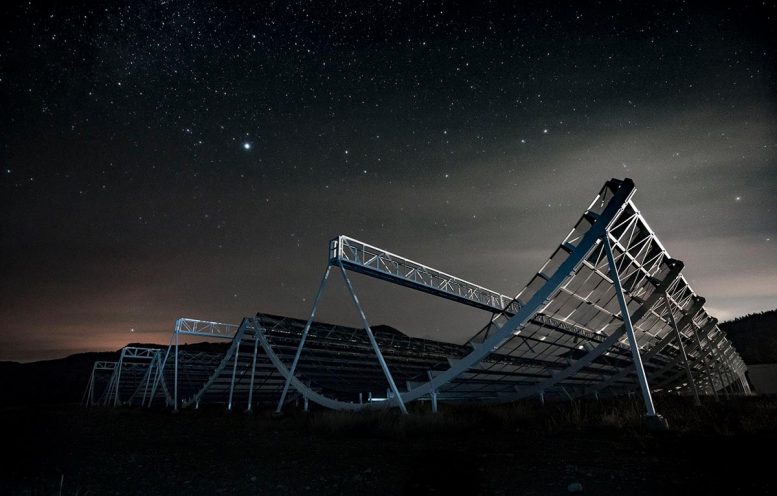
CHIME, pictured here, consists of four large antennas, each about the size and shape of a snowboarding half-pipe, and is designed with no moving parts. Rather than swiveling to focus on different parts of the sky, CHIME stares fixedly at the entire sky, looking for fast radio burst sources across the universe. Credit: CHIME Collaboration
“These new discoveries will allow the scientific community to study more repeating FRBs in fantastic detail across the full electromagnetic spectrum and help answer a major open-question in the field: Do repeating and non-repeating FRBs originate from distinct populations?” Adds Aaron Pearlman, an FRQNT postdoctoral fellow at McGill University’s Trottier Space Institute who also collaborated on the paper. “I’m excited for the new insights that will be unlocked as a result of our study.”
“It is exciting that CHIME/FRB saw multiple flashes from the same locations, as this allows for the detailed investigation of their nature,” says Adaeze Ibik, a PhD student in the David A. Dunlap Department for Astronomy and Astrophysics at the University of Toronto, who has led the search for the galaxies in which some of the newly identified repeating FRBs are embedded.
“We were able to hone in on some of these repeating sources and have already identified likely associated galaxies for two of them.”
Shedding light on the mysterious origins of FRBs
FRBs are considered one of the biggest mysteries in astronomy, but their exact origins are unknown. Astronomers do know that they come from far outside our Milky Way and are most likely produced by the cinders left behind after stars die.
One unexpected finding described in the paper is that contrary to what has previously been thought, all FRBs may be repeaters rather than one-offs. It is simply that many repeating FRBs are surprisingly inactive, producing fewer than one burst per week, and that the apparently one-off FRBs have simply not been observed for long enough until now for a second burst to be detected.
Pleunis notes that this new research brings us closer to understanding what FRBs are.
“FRBs are likely produced by the leftovers from explosive stellar deaths. By studying repeating FRB sources in detail, we can study the environments that these explosions occur in and understand better the end stages of a star’s life. We can also learn more about the material that’s being expelled before and during the star’s demise, which is then returned to the galaxies that the FRBs live in.”
Reference: “CHIME/FRB Discovery of 25 Repeating Fast Radio Burst Sources” by Bridget C. Andersen, Kevin Bandura, Mohit Bhardwaj, P. J. Boyle, Charanjot Brar, Tomas Cassanelli, S. Chatterjee, Pragya Chawla, Amanda M. Cook, Alice P. Curtin, Matt Dobbs, Fengqiu Adam Dong, Jakob T. Faber, Mateus Fandino, Emmanuel Fonseca, B. M. Gaensler, Utkarsh Giri, Antonio Herrera-Martin, Alex S. Hill, Adaeze Ibik, Alexander Josephy, Jane F. Kaczmarek, Zarif Kader, Victoria Kaspi, T. L. Landecker, Adam E. Lanman, Mattias Lazda, Calvin Leung, Hsiu-Hsien Lin, Kiyoshi W. Masui, Ryan Mckinven, Juan Mena-Parra, Bradley W. Meyers, D. Michilli, Cherry Ng, Ayush Pandhi, Aaron B. Pearlman, Ue-Li Pen,, Emily Petroff, Ziggy Pleunis, Masoud Rafiei-Ravandi, Mubdi Rahman, Scott M. Ransom, Andre Renard, Ketan R. Sand, Pranav Sanghavi, Paul Scholz, Vishwangi Shah, Kaitlyn Shin, Seth Siegel, Kendrick Smith, Ingrid Stairs, Jianing Su, Shriharsh P. Tendulkar, Keith Vanderlinde, Haochen Wang, Dallas Wulf, Andrew Zwaniga and The CHIME/FRB Collaboration, 26 April 2023, The Astrophysical Journal.
DOI: 10.3847/1538-4357/acc6c1

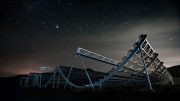

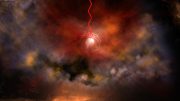
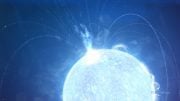
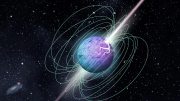
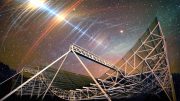
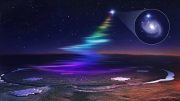
Be the first to comment on "The Universe on Repeat: Doubling the Number of Repeating Fast Radio Burst Sources"